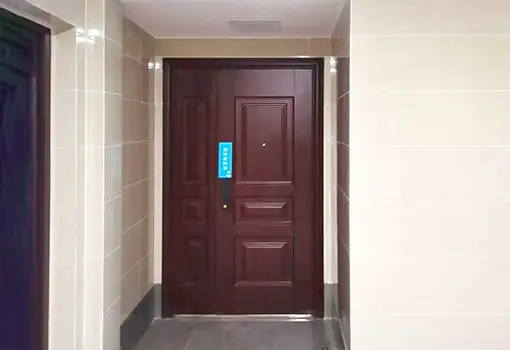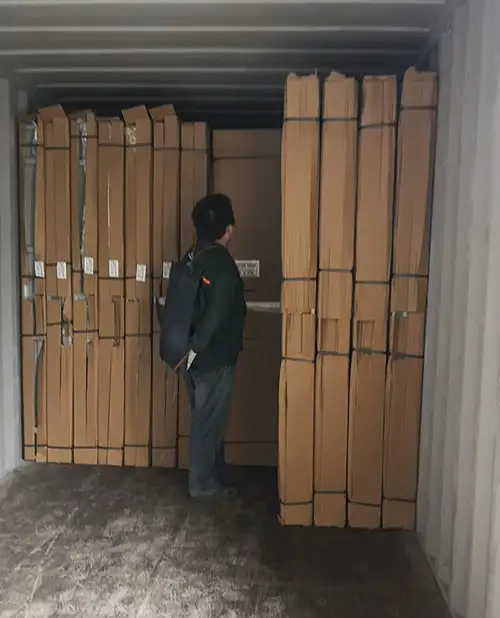Tel/wechat/whatsapp : +86 13758983507
Email : info@homeindoor.cn


In an era where security is more important than ever, steel security doors have emerged as a trusted solution for homeowners, businesses, and institutions alike. These doors combine robust protection, long-lasting materials, and even stylish design options. Whether you're looking to secure your home or fortify a commercial building, understanding steel security doors is the first step toward better safety.
This article covers everything you need to know — from what a steel security door is to how it's built, used, and rated for performance.
A steel security door is a reinforced entry or internal door made primarily from high-strength steel. It is designed to resist forced entry, withstand harsh weather conditions, and in many cases, provide fire protection. Unlike standard wooden or aluminum doors, steel security doors offer unmatched strength and durability, making them ideal for environments where safety and longevity are a priority.
These doors aren't just functional — modern versions are designed to look good too, often available in a variety of colors, finishes, and panel styles.
Steel security doors are used in a wide range of settings, including:
Residential: Installed at front, side, or rear entrances to protect against burglars and extreme weather.
Commercial: Used in retail stores, office buildings, and malls for securing main entrances and sensitive internal areas.
Industrial: Found in factories, warehouses, and production facilities where security and fire resistance are crucial.
Institutional: Common in schools, hospitals, and government buildings to protect people and property.
High-Security Areas: Installed in banks, data centers, and military facilities to prevent unauthorized access and ensure compliance with safety standards.
Steel security doors are engineered to be tough and resilient. Key construction features and materials include:
Outer Shell: Made from thick galvanized steel sheets (usually 1.2mm to 2mm thick) to prevent corrosion and enhance strength.
Core Materials:
Honeycomb core – lightweight and cost-effective.
Steel reinforcement core – for maximum strength.
Mineral wool or ceramic fiber – used in fire-rated doors.
Polyurethane foam – for insulation and energy efficiency.
Frame: Constructed from steel and securely fixed to the wall with heavy-duty anchors or expansion bolts.
Welding and Reinforcements: Internal steel reinforcements and perimeter welding ensure the structure holds up under attack or impact.
Finish: Powder-coated or painted finishes protect against rust, UV damage, and wear.
While security is the primary goal, aesthetics are also important. Today’s steel security doors come in various optional designs, such as:
Decorative Panels: Woodgrain textures, raised panels, or laser-cut steel patterns.
Glass Inserts: Shatterproof or bullet-resistant glass with wrought iron grills for a stylish yet secure look.
Color Options: Custom powder-coating in matte, glossy, or metallic finishes.
Architectural Styles: Available in modern, traditional, or industrial styles to match the building’s design.
Side Panels and Transoms: For a grand entrance without compromising security.
These customizations make it possible to integrate steel doors into luxury homes and high-end commercial buildings without sacrificing security.
Steel security doors are often rated by security-grade standards, which indicate how resistant they are to forced entry or damage. Common grading systems include:
European Standard (EN 1627–1630): Security classes RC1 to RC6, with RC6 offering the highest level of protection.
American UL Ratings (e.g., UL 752): Used for bullet-resistant doors.
ASTM and ANSI Standards: Define strength, impact resistance, and lock security.
Fire Ratings: Measured in minutes (e.g., 30, 60, 90 minutes) of resistance to fire.
Choosing the right grade depends on the level of threat — a home may need a basic RC2 or RC3 door, while a bank or military site might require RC5 or RC6.
Hardware plays a critical role in the overall effectiveness of a steel security door. Common components include:
Locks:
Multi-point locking systems
Deadbolt locks (manual or electronic)
Smart locks with keypad, card, or biometric access
Hinges:
Heavy-duty or concealed hinges
Security pins to prevent hinge-side attacks
Strike Plates:
Reinforced steel plates mounted to the frame to resist kick-ins
Door Closers:
Automatic hydraulic closers to ensure the door shuts properly every time
Peepholes and Cameras:
Wide-angle viewers or integrated smart doorbell cameras for safe visitor identification
Seals and Thresholds:
Weatherproof gaskets and bottom seals for insulation and soundproofing
High-quality hardware complements the steel door’s physical strength, creating a complete, secure entry system.
Steel security doors are an essential part of modern building safety. They offer superior protection, high durability, and can even enhance a building’s appearance with optional design features. From home use to industrial settings, they provide peace of mind and long-term value.
When selecting a steel security door, consider the application, construction materials, security grade, and hardware options. Investing in a well-built, well-equipped steel security door is not just about protection — it's about preserving what matters most.
Optional Veneer & Texture
Optional solid color
The surface is covered with a layer of pvc film, sleeved with bubble wrap, and then packed into a 7-layer corrugated cardboard box and wrapped with strapping tape; the secure packaging can reduce the damage caused by scratches and collisions during on-site handling.


We have no minimum order quantity and accept orders in any quantity.Whether you need a single door or material for an entire project, we offer affordable product price and shipping to your country
Any size within the maximum size range can be customized,
Of course,We have a wide range of standard colors to choose from, and we can also produce according to the color card provided by the customer.
Of course, we can ! Our profesional designer can provide detailed design drawings to confirm the specifications and materials before production.
You can also download reference drawing on our website
Of course, we can provide different materials, colors, styles, prices of hardware accessories for customers to choose, where you can one-stop shopping for doors and accessories! Most of our hardware is made in china (chinese brand), We can also supply hardware made by international Top brands (such as Häfele, Dorma), or Equivalent China-made hardware